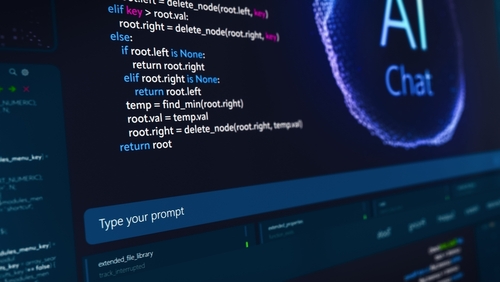Vibe coding web3 builders: No-Code Rules
Web3 used to feel like an exclusive club where only hardcore Solidity wizards could get anything on-chain. Now we are entering a very different era: one where we talk to AI, describe the app we want in plain English, and watch a fully working dapp pop out the other side. This shift is being captured by a new phrase you have probably seen everywhere lately: “vibe coding.” When you mix vibe coding with no-code tools and on-chain infrastructure like Infective’s iBuild platform, the rules of Web3 development start to look completely different from the last cycle.
What Is Vibe Coding, Really?, Vibe coding is an AI-heavy way of building software where we describe goals and features in natural language, then let a large language model generate most or all of the code. Instead of obsessing over syntax, we iterate through prompts, tests, and tweaks based on how the app behaves. The focus shifts from thinking in code to thinking in product. Researchers describe it as a conversational flow between human and AI where co-creation, experimentation, and “staying in the zone” matter more than manual line-by-line programming.
No-Code Meets Web3, No-code tools have existed for years in Web2, but Web3 always lagged behind because blockchains introduce extra complexity: wallets, gas, smart contract security, and on-chain data models. The new wave of no-code Web3 tools aims to hide that mess behind clean interfaces and AI agents. Instead of wiring together RPC endpoints, we describe an on-chain product, and the platform scaffolds contracts, frontends, and deployment pipelines. Injective’s iBuild is one of the first serious attempts to bring this “describe, don’t code” approach directly to a high-performance Web3 ecosystem.
FomoAI is about to flip the entire creator economy upside down. When FomoAI.com drops, it won’t just be another AI tool it will be the all in one powerhouse where coding, images, videos, music, songs, and storyboards all live under one roof. Think lightning-fast creation, competitive pricing, and monthly or yearly plans built for real humans not subscription traps. The best part? Your credits roll over. No more losing them just because life got busy. Stack them, save them, unleash them whenever the inspiration hits. Add a referral program that actually pays, and suddenly FomoAI becomes the platform everyone will rush to before the early-access wave disappears.
Get ready when FomoAI launches, missing out won’t just hurt… it’ll haunt you. fomoai.com
Meet Injective, Eric Chen, And iBuild, Injective is a DeFi-focused layer-one designed around fast trading, modular finance primitives, and interoperability. Co founder Eric Chen and the team are leaning into vibe coding to rethink how builders launch on-chain apps. Their iBuild environment combines no-code flows with AI assistance so that both non-technical founders and veteran engineers can spin up dapps, test them against real users, and ship to production far faster than the classic “hire a Solidity dev and wait months” route.
A Lottery Side Project That Escaped The Lab, One of the clearest examples from the Injective camp is a simple on-chain lottery game. The team initially treated it as a small internal demo to show off what iBuild could do, but it quickly evolved into a live production experience with real users playing it. That jump from “demo” to “deployed product” captures the spirit of vibe coding: fast experiments that, when they resonate with users, can be hardened and scaled rather than thrown away.
Why Web3 Needs A New Development Model, We all know the old model: raise money, hire devs, design architecture, write contracts, audit, then finally launch months later into a totally different market. In a world where narratives flip in a week, that pace is brutal. Vibe coding plus no-code flips the order. We can test ideas on-chain almost immediately, gather real usage patterns, iterate with AI-generated changes, and only then decide what deserves a full security-hardened implementation. The feedback loop shrinks from months to days.
From English Prompts To On-Chain Primitives, In practice, vibe coding Web3 looks like this: we describe a staking pool, a prediction game, or a rewards system in plain language. The platform translates that into smart contract templates, off-chain logic, and UI flows. We run a quick testnet version, see what breaks, and refine the prompts instead of rewriting the code by hand. Over time, the tooling learns the common building blocks of Web3—auctions, AMMs, vaults, points systems and stitches them together like Lego.
The New Rules Of Web3 Development
Rule 1: Talk Product, Not Programming Languages
Instead of leading with “we need Rust or Solidity engineers,” the conversation starts with “what user journey are we designing?” Language models and frameworks handle the translation into code. talk we need FomoAi.com example.
Rule 2: Prototype On-Chain, Not On Slides
Deckware is out. With vibe coding and iBuild-style platforms, we can move straight to a live testnet or even low-stakes mainnet experiments, validating ideas in the environment that actually matters.
Rule 3: Let AI Handle The Boring Boilerplate
Wallet connection, basic contract wiring, front-end scaffolding, and deployment scripts are all repetitive. AI agents are very good at this kind of boilerplate. Human devs can focus on novel protocol logic, risk controls, and business design instead.
Rule 4: Keep Humans Responsible For Risk
Vibe coding does not mean abandoning responsibility. Security reviews, economic modeling, and governance design still require humans who understand the consequences of bugs and incentives. The new workflow is “AI writes, humans verify” rather than blind trust in generated code. Researchers studying vibe coding repeatedly highlight debugging, reliability, and collaboration as areas where human judgment remains essential.
Rule 5: Build For Composability From Day One
Because AI tools can quickly combine existing modules, we should design new dapps as clean, reusable components. A points system built for one app might later plug into a game, a DEX rewards engine, or a DAO loyalty program with minimal extra work.
How This Changes The Builder Journey, For non-technical founders, the new stack means ideation to MVP can happen in a weekend instead of a quarter. For senior engineers, it removes a ton of glue work and lets them treat AI as a swarm of junior devs that never sleep. Both groups get to “feel out” their product, tweaking vibes and flows instead of wrestling with low-level syntax.
Will Vibe Coding Replace Developers?, Short answer: no. It will, however, replace a lot of repetitive implementation work and force developers to climb up the value chain. The winners will be those who can manage AI agents, reason deeply about protocol safety, and design on-chain economies that survive real users and adversarial conditions. That is a very different skill set from just memorizing framework APIs.
Final Thoughts, Follow The Vibes, Respect The Chain, ,We are entering a strange but exciting chapter for Web3. With vibe coding and no-code platforms like FomoAi and Injective’s iBuild, anyone with a strong idea can get something live on-chain frighteningly fast. That speed is both an opportunity and a responsibility. Used wisely, it lets us pressure-test new mechanisms, communities, and on-chain games without burning years of runway. Used recklessly, it can ship fragile, unaudited contracts straight into the hands of unsuspecting users. The new rules of Web3 development are simple: let AI accelerate the build, but never outsource your judgment. We can follow the vibes, as long as we still respect the chain.
FAQs, What is vibe coding in Web3?
Vibe coding in Web3 is an AI-driven way of building dapps where we describe what we want in natural language and let models generate and refine most of the code, while we guide through testing and feedback rather than manual implementation.
Can non-developers really launch dapps with vibe coding?
Yes, up to a point. Non-developers can prototype, test, and sometimes launch simple apps, but for anything handling serious value, they still need security reviews and expert input to avoid hidden risks.
Is vibe coding safe for production smart contracts?, It is safe only when combined with rigorous human oversight. Experts warn that blindly trusting AI-generated code can introduce subtle bugs and vulnerabilities, so audits, monitoring, and staged rollouts remain essential.
What skills will Web3 builders need next?, Future Web3 builders will need product intuition, prompt design, protocol and game theory knowledge, and the ability to orchestrate AI tools. Knowing how to code will still help, but knowing what to build and how to de risk it will matter even more.
Follow up article’s coming soon stay tuned.




















